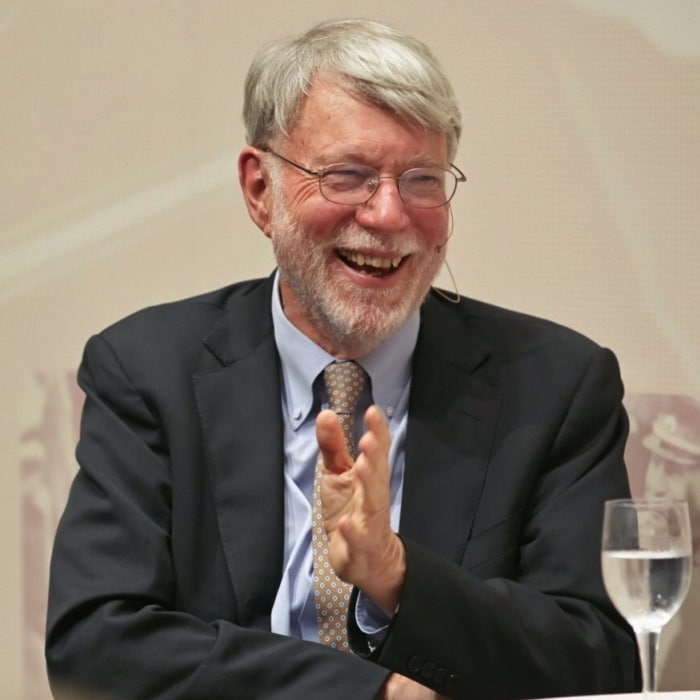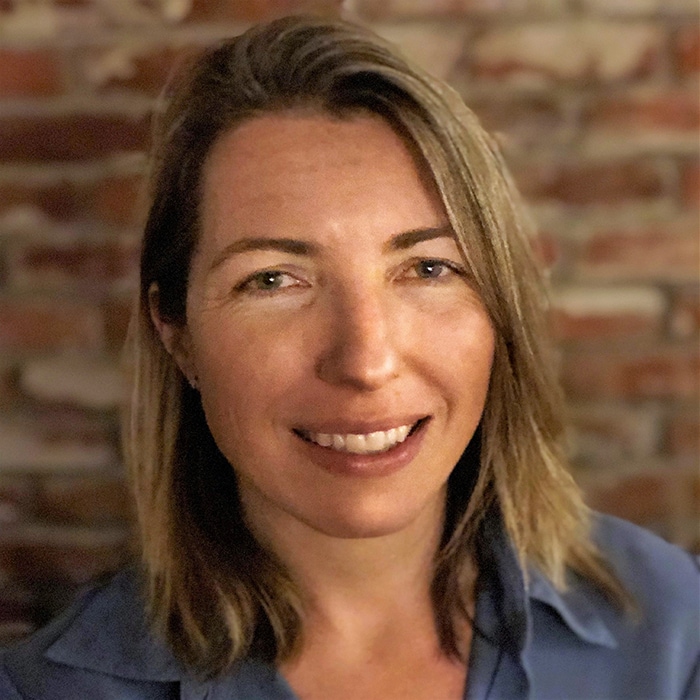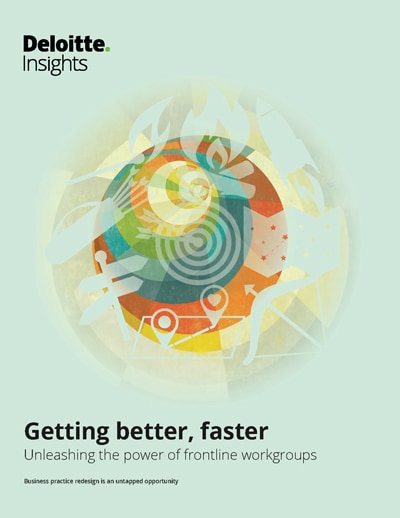Frame a powerful question has been saved

Frame a powerful question Ask questions that focus on the learning opportunity—and can provoke and inspire others to change the game
01 February 2018
 John Hagel III United States
John Hagel III United States John Seely Brown (JSB) United States
John Seely Brown (JSB) United States Andrew de Maar United States
Andrew de Maar United States Maggie Wooll United States
Maggie Wooll United States
Incrementalism allows us to believe we are making progress—after all, we’re getting better at something every day. But focusing on small advances can make us miss big environmental shifts. Agreeing on a statement of purpose—a powerful question to answer—can help a workgroup move beyond incremental efforts.
Introduction: Beyond incrementalism
It sounds like a too-good-to-be-true story of inspiration—but it actually happened. In 1943, Polaroid co-founder Edwin Land was taking vacation photos with his family, and his 3-year-old daughter asked, “Why do we have to wait for a picture?”1
Now, that is a powerful question. It inspired the invention of an entirely new product—and it exemplifies the kind of inquiry that opens up real possibility. Its audaciousness grabs our attention, captures our interest, and motivates us to come together to try to make its vision real. And in an environment that can be unpredictable and challenging, framing a powerful question might provide inspiration and motivation to the workgroup and help lift it out of the day-to-day to zoom out to a bigger-picture, future view.
Learn More
Explore the practices and case studies
Read an overview of the opportunity
Download the full report or create a custom PDF
In a rapidly changing world, with dynamic requirements, assumptions will change, including potentially the assumptions that made a particular approach the best one, or made a performance objective the most relevant, or made a shared outcome worthwhile. Consider, for example, the assumption that film must be developed in a multi-step process in a darkroom. The target at which you’ve been aiming may no longer represent what you want to achieve. A powerful question forces the workgroup to continuously challenge its assumptions and focus on what might be most relevant.
A powerful question can also help a workgroup break out of incremental tendencies. Incrementalism allows us to believe we are doing OK because we are busy and getting better at something every day, but it can obscure the real danger of falling ever further behind more rapidly advancing alternatives and expectations. But it’s one thing to understand that incremental efforts are not enough and another to let go of running a little harder on the business-as-usual treadmill and to really look for what might make the treadmill obsolete. A powerful question can pop that bubble of complacency, provoking us to reconsider the bounds and rules of the game. Framing a powerful question is a way for a workgroup to step back and ask: Is this what we should be doing? What else is possible? Is the group’s shared outcome still the most relevant and important thing we should be focused on to have more impact?
Workgroups looking to accelerate performance improvement will have to be able to continuously adjust to focus on the outcomes where they can make the greatest impact and avoid getting trapped making incremental progress against objectives that are no longer relevant. Framing a powerful question can help us not only adapt to change but use it to break new ground.
You know you need this practice when:
- The questions we’re asking aren’t attracting others or leading to new insights
- There are few, if any, opportunities to change the game
- Outcomes don’t inspire individuals or energize the workgroup
The frame a powerful question practice: What it is
A powerful question, as we define it here, is one that reframes what a workgroup is committed to and how members approach it. A practice of framing a powerful question might mean periodically stepping back from the workgroup’s immediate demands and considering what has changed and what hasn’t.
A powerful question is:
- Authentic. Powerful questions should expose what we don’t yet know. They should challenge us to embrace our own vulnerability, to admit uncertainty about the path forward, and to lean into discomfort.
- Compelling. A powerful question should pull people out of an incremental mind-set, refocusing workgroups on where they can achieve an entirely new level of impact. Even as a powerful question should require collective exploration, it can also tap into individual passion, generating energy and excitement in members.
- Open-ended. Instead of inspiring a single, definitive answer, a powerful question should open things up, setting the stage for ambitious, targeted action. It shouldn’t be fuzzy or vague, or limited by what the workgroup or the organization has done in the past.
- Focused. A powerful question should challenge the why and the what, as well as the who, how, where, and when, for a workgroup. It should be a focusing mechanism to help a group focus on what is going to matter to actually achieve breakthrough performance. The question should give us pause yet remain within the context of the workgroup and be about the kind of future a group might strive to shape and create.
- Actionable. A powerful question should come out of deep thought and reflection, backed by commitment to act. It should reflect the conviction that there is value in asking it—inviting new perspectives and ideas to the table—and should generate actions rather than answers.
Examples of powerful questions
The right question can animate a workgroup. Here are some variations of powerful questions that have inspired real workgroups and organizations:
- Why do we create appliances for our customers instead of with them?
- How can we make innovative products that the market wants—while it still wants them?
- If we are the “best of the best,” why are attacks not disappearing but actually increasing? What game should we be playing, and how do we get better at playing it?
- How do we grow higher-quality barley in a future with half the water supply?
- What would it take to eliminate all car accidents?
- What if we could keep more planes operational? What if we could knock the No. 1 delay driver out of the top 10?
- How can we use technology to see the impact of our decisions and make better ones?
In short, a powerful question can help a workgroup navigate a shifting environment, directing our attention and guiding our action. Unlike a fixed North Star, a powerful question should leave room for doubt and new information and leave itself open to be challenged. It should prime the imagination, focus passion, and motivate accelerated performance, aligning the group toward a transformative goal.
. . . and what it isn’t
- A “moonshot.” A moonshot isn’t a question but a declared destination: We will go to the moon. It is inspiring but predetermined, not open to debate. A powerful question also shouldn’t presume a single resolving answer or dictate what form the solution will take. Answers are of limited value in accelerating performance and, in an exponential world, tend to become obsolete faster and faster.
- A questioning culture. While there is inherent value both in questioning and in learning to ask better questions, the idea here is to use a single, overarching question as a focusing mechanism—one that could help the workgroup home in on the crucial elements of breakthrough performance.
- A stretch goal or incremental. It’s not How do we get to 100x performance, but What could we do, what kind of impact could we have, if we were performing at 100x? By moving the focus away from numerical measurement and toward fundamental change, framing can set the stage for entirely new levels of impact.
- A postmortem. Rather than asking questions when something goes wrong, the workgroup should frame a powerful question when everything is going well, in the face of success: What else should we be doing to do a lot better?
Intersections with the other eight practices
A powerful question can influence every aspect of a workgroup’s efforts.
- Commit to a shared outcome: A powerful question can set the stage for committing to a shared outcome, while progress toward that shared outcome can create the basis for a more powerful question.
- Maximize the potential for friction. By not prompting an easy answer, a powerful question can force workgroups to look outside the group for perspectives and resources that can help uncover or create the answer.
- Seek new contexts. To answer a powerful question, workgroups look for inspiration and exposure to more and different ideas and approaches that might accelerate learning for the group.
- Cultivate friction. Saying from the outset, “We don’t know how to get there” can set the expectation of coming at a problem from different angles and challenging them on the way to finding answers. Lacking a ready answer invites productive challenges. In addition, the magnitude of the question can raise the stakes for group members.
- Eliminate unproductive friction. A compelling question can create a context for shared meaning in which we can articulate disagreement and explore thoughts and feelings, facts and figures.
- Reflect more to learn faster. The question can shift the scope beyond just the moment at hand, connecting the “moment” to the implications and learnings across moments and over time. What did we learn that informs our powerful question?
- Bias toward action. A powerful question can help overcome old assumptions and build more of a creative set of conditions.
- Prioritize performance trajectory. A powerful question can help identify the area of highest-potential impact, which would guide the performance objectives and metrics that the group will choose to track.
Putting the practice into play
A powerful question isn’t handed down from on high—instead, a workgroup must articulate and refine it. How do you get to the question that is going to catalyze a leap in performance? First, set the stage for the workgroup to ask the questions that matter. In an exponential world, what got us to where we are likely won’t get us to where we need to be. How can you convey that magnitude of changed assumptions and expectations to engage others?
Part of what makes a question powerful is that it can invite new perspectives and ideas to the table and lead to significant actions that may not have otherwise been considered or possible. How does this work? The framing matters—not only what you ask but how you ask it. Amp it up to turn the question into something that is visceral and urgent, not just a thought exercise, for those who hear it.
The challenge is that there are a multitude of questions that could potentially change the game. The workgroup members must consider how they can make it their own in ways that only they can. The powerful question and the possible actions it spurs are unique to the group.
Set the stage
A powerful question may originate from a workgroup’s leader or emerge from a discussion. That first question starts to open up the space for getting to the question that matters. Focusing on a question, rather than a goal, is more than semantics: Saying, “I have no idea what that goal will look like or how to get there” is very different from saying, “We will land a rocket on the moon in five years through this agency.” This is something new: I think I have a powerful question and an interesting idea, but how could it be more powerful?
The purpose isn’t to reinforce your own opinion or persuade others to your thinking—adding a question mark to a predetermined idea can breed cynicism and shut down potential avenues of exploration. Rather, this type of asking is for getting better insight into what matters and where the workgroup can focus to have the most impact. Know what you don’t know and ask for help. Organizations often see questioning and admitting to not having all of the answers as signs of weakness. But framing a powerful question that acknowledges the current state of reality—including the areas of weakness and doubt—can get people’s attention. It also can build trust. The process might start with being vulnerable and explicit about not having an answer, and lead to a shared acknowledgement of what people don’t know and a shared commitment to exploring potential answers. Legitimizing doubt often creates the space for workgroup members to challenge, fundamentally, what the group is doing and whether it should continue to do it. Admitting imperfection and uncertainty can also unlock a certain human empathy in others beyond the workgroup, allowing you to forge connections to those who otherwise may not have been as apt to help.
Ask a question that changes the game to jolt the workgroup out of business-as-usual. It might not be articulated such that it will be the overriding question for the workgroup, but you may need some shock and a sense of urgency to help the group look at the big picture and notice what’s new. At first blush, the question might seem impossible, or at least not obvious. The goal should be to treat absolutes as conditional, to recognize that what may be true in one context may not be true in another.
For every one question, there are sub-questions to unpack:
- What assumptions am I making that make this seem impossible?
- What don’t I know about that assumption?
- What are the leverage points that might make it possible?
- Does the question fundamentally revolve around value creation and impact on costs and efficiency?
- Let’s not get distracted by questions—we’ve got to stay focused on results.
- Great question, but we’re probably not going to be the ones who figure it out.
- Yeah, sure, this all sounds good—but it’s too risky, and here’s why it will never work.
- We don’t have time for questions.
- What should we ask but never do?
- What questions could we ask today that would fundamentally change the game tomorrow?
- How many times have we missed an opportunity by being “realistic”?
Force the group to identify the issue it is aiming to solve and why it matters. For example, costs will matter, but focusing only on cost might get you nowhere. One problem with posing game-changing questions is that people will likely try to provide answers. Group members may respond with facts, figures, and expertise about how it is done and (more likely) why it can’t be done. Try to acknowledge current realities that run counter to the vision of a possible future, and then push on and explore the nature of those constraints.
Consider the elite Field Tech workgroup in Southwest Airlines’ Maintenance and Operations Unit: Members didn’t ask themselves how they could get planes back in service 2 percent faster than other airlines, or relative to themselves the year before. Instead, the field techs began the question in the context of the shared outcome: If we care about getting passengers where they need to be, how can we keep our aircraft operational all of the time? That was ambitious but too costly relative to the impact. They unpacked that question to one that motivated action: How can we knock the No. 1 “delay driver” on the issues list out of the top 10? At the time, Southwest people generally believed it nearly impossible to reduce the impact of that No. 1 issue, much less knock it out of the top 10.
The question has value, but so does the asking. Focus on the who, not just the what, to elicit broad participation. The more tightly you frame the question, the less it is going to challenge people in terms of creating new approaches. Not having the answer focuses attention on what can be learned, and in so doing could attract others who want to learn and make space for others to bring forward options and get excited about creating answers.
Amp it up
Challenging questions can be overwhelming. The point of framing a powerful question isn’t to overwhelm but, rather, to spark urgency and inspire action, including reaching out for help and attracting outside resources. The way the group shares the question with others will likely shape their response. How does a workgroup go about framing and sharing a powerful, challenging question in such a way that it motivates group members, attracts other resources, and gives everyone a sense that there is a way forward? It should be a balance between being narrow and diffuse, between being grounded and making space to accommodate others, between being ambitious and working with constraints.
One way of narrowing the question is to focus just on uncovering points of leverage. It’s not about changing everything—the challenge is to name one thing that has the potential to change everything.2 Think about a performance goal, but instead of focusing on the goal, frame a question around what could have a genuinely major impact: What one lever in the organization that, if we shift it, might get us to a different level of performance? What would have to happen for that to become reality?
Having landed on a potentially powerful question, the workgroup should be as open as it can with as many people as it can about the question. The goal is to attract other resources and passionate individuals who are excited about being part of making progress toward an answer. The messenger matters: People are more likely to help someone they value or respect, especially when that person demonstrates conviction and commitment. Make it personal and humanize it: Why does this question matter to me? What is my story that led me to this question? To what human need does this speak? Avoid framing in conceptual terms that engage only the mind. When the question isn’t abstract, people can be more willing to deviate from the standard operating procedures to look for alternatives that might generate more impact.
For example, for a group of supervisors of dispatch at Southwest Airlines, the question was how they could honor the legacy of a colleague, Mike Baker, who had championed using technology to make smarter routing choices and make a complicated job a whole lot easier. They formed a workgroup committed to addressing the very question that he had posed and named it in his honor. “Baker” is now mentioned hundreds of times a day throughout the organization, and his passion for smarter decisions can live on throughout the next generation of dispatch supervisors.3
Antibodies at work
If you aren’t surprised by the responses to a question, it is not the right question. Don’t ask a question seeking to confirm a belief or validate a preferred approach—seek surprise by focusing on what you don’t know. Seek to uncover information or resources you didn’t know existed. One way to do this is to play with constraints—resources, time, or methodology—to make the question provocative enough to attract attention and elicit focused responses.4 For example, a broad question, “How do we win the race with a car that is no faster than anyone else’s?”5 is ambitious but likely to generate broad responses based on what people already know. Constraints—“How do we win if we can’t change the body?” or “How do we win if the race is twice as long?”—could prompt people into thinking about specific dimensions that they have not considered and that they would need to explore further, through action, because they haven’t thought about it before. Constraints can force people out of areas where perceived expertise stands in the way of new learning—I have answers—and into unknown territory.
Here, where they are not expert, they can be more open to looking for insights, not answers. In an exponential world, answers, no matter how good they are, tend to become quickly obsolete. Beyond the boundaries of their expertise, people may be more open to taking in new information, building new constructs, and being more creative and resourceful in developing an understanding of the challenge. The answers that do emerge may be just the starting point for an even better question.
Questions for reflection
© 2021. See Terms of Use for more information.





